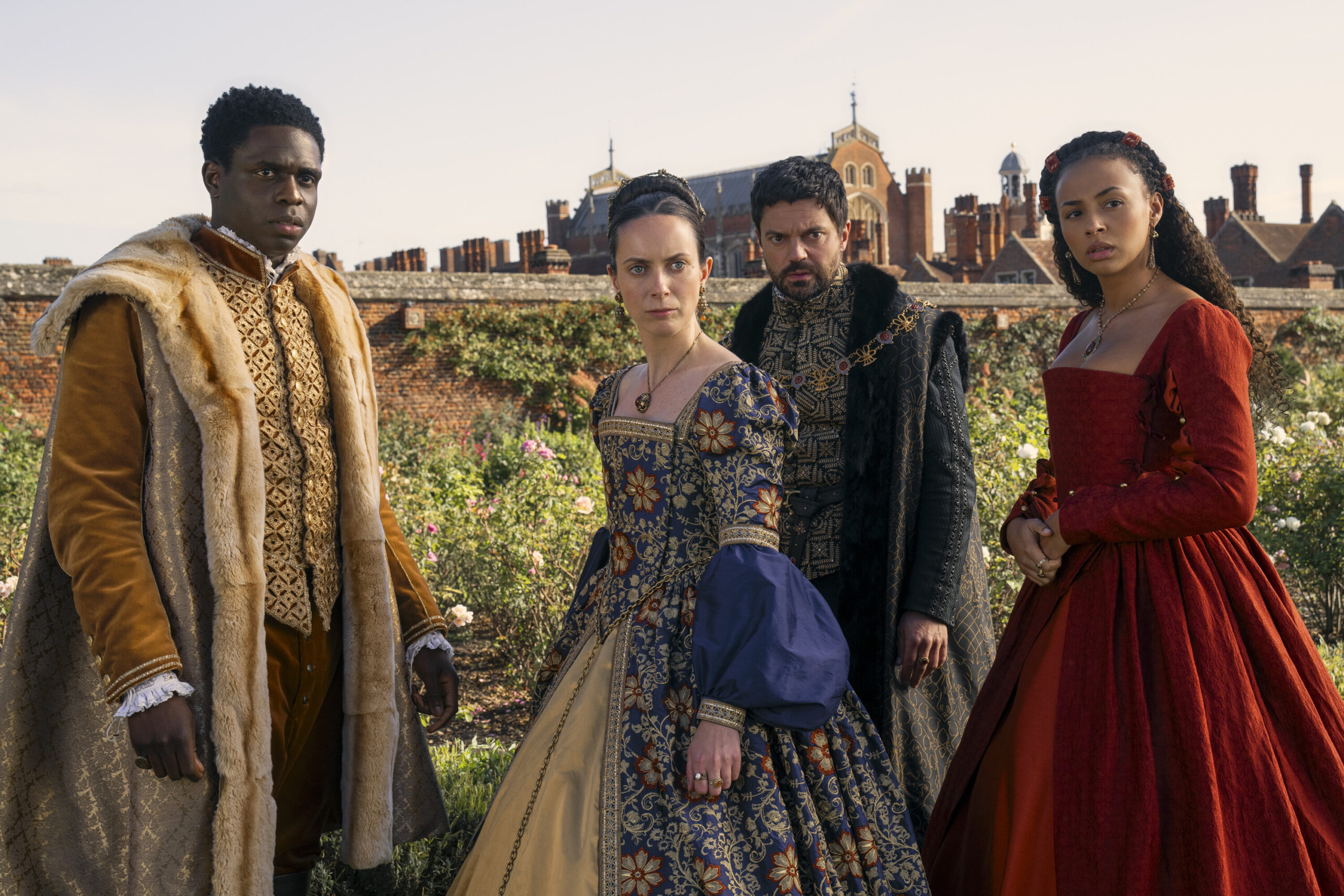The life of the former Queen of England, Lady Jane Grey, was anything but a comedy. Her life was certainly not a story most would make the center of a historical, fantastical, romantic comedy. But a 2016 novel, My Lady Jane, by Cynthia Hand, Brodi Ashton, and Jodi Meadows did just that – and eight years later the Amazon Prime television show My Lady Jane was born. The humor, brilliance, and beauty of this show cannot be overstated even if Amazon did cancel the show only a month after its premiere.
If anyone were to go into this show expecting the world-building and seriousness of, say, Game of Thrones, they would be very quickly introduced to the way in which this show does not take itself too seriously. The narrator, voiced by Oliver Chris, recants at the very beginning of episode one (“Who’ll Be the Next in Line?”) the history of Tudor England, which happened, as he so realistically puts it, a “long ago, in a land not that far away” – what a way to come out of the gate swinging and subverting expectations that this is not going to be the historical fairytale people expect it to be. In fact, the narrator seems to disagree (morally, that is) with the trajectory of Lady Jane Grey’s history, saying, “F*** that. What if history were different?”
My Lady Jane is a retelling of the real-life happenings of Lady Jane Grey. Lady Jane Grey was Queen of England (and Ireland) for just nine short days before she was imprisoned and executed by her cousin, Princess Mary. This television show follows Jane Grey from her ascension to the throne to her attempted and unsuccessful execution, which is where the season – and series – ends after eight episodes. Woven within this retelling is a magical realism element that elevates the stakes of Lady Jane Grey’s life. There are the humans, or Verity, and then there are the Ethians, humans with the ability to turn into animals. The conflict between the two and the oppression of the Ethians is central to Lady Jane Grey’s story.
The humor, however, set at the beginning of this show becomes infectious throughout all eight episodes; the over-exaggerated characters made even more by the fantastic casting choices. Lady Jane Grey, in a bid to set her family up for success and wealth, is made by her great uncle Duke of Leicester, who inherited everything after Jane’s father died without a male heir, to marry the infamous Lord Guildford Dudley. Unbeknownst to her family, they are about to become much more established as sickly King Edward VI secretly names Jane as his heir. When Edward dies (or is believed to have died…) and Jane is named queen, his sister, Princess Mary, becomes furious and sets out to do whatever she can to remove Jane from the throne and become queen herself.
An innocuous and outlandish plot on its own made even more entertaining by the characters themselves. Jane, played by Emily Bader, runs into who she believes is her betrothed, Lord Guildford Dudley, in his lavish, pink opulent dress up with a servant on hand and insulting her – someone straight out of a middle-age cartoon. She remains believing he’s her betrothed until at the altar when she realizes she will be marrying the dashing, significantly less opulent-looking man she ran into at a pub – but, the opulent man from earlier is her new brother-in-law, Lord Stan. Her brother-in-law is played by the hilarious Henry Ashton, who leans into the spoiled nature of his character and creates an amazing caricature of aristocratic lavish lifestyle. Princess Mary, played by Kate O’Flynn, leans heavily into the childishness one can only imagine would be required of the real-life jealous princess. The constant references to her BDSM relationship with her assistant, Lord Seymour, and her vapid outbursts and tantrums are some of the most comedic scenes of the show.
The conflict between the Verity and Ethians seems to, I think pretty heavily, act as an allegory for the oppression of minority individuals, as Ethians are outlawed and persecuted. These Ethians are cast as the beasts and evils within society, when, in actuality and how it usually is, the true evil comes from those in power. Jane Grey, however, recognizes the humanity within these individuals; and when a major secret is revealed about her betrothed, Jane is even more dedicated to fully liberating these people once she comes into power.
My Lady Jane has amassed a 95% on Rotten Tomatoes with the enemies-to-lovers relationship between Jane and Lord Guildford as the main draw for many of the viewers – the fact that the two have very few interactions after the climax of the seasons makes the cancellation of the show even more painful for viewers wanting to see more of the couple. Prime canceled the show a month after the premiere because of reported low viewership (Cunningham, 2024). However, many viewers find that hard to believe. One fan created a petition to save the show, and high-brow celebrities such as George R.R. Martin have backed it up (Moore, 2024). The petition currently has 113,344 signatures to bring the show back for a second season, but no comment or actions have been made by Prime and the showrunners (Mullaney, 2024).
The conclusion of this show begs the question of what is corporate priority for shows that clearly are well-loved and have much more potential than what they were able to explore in the first few episodes. The fantastic cast, low-stakes world-building that is quite reflective of our society today, and the brilliance of humor and character dynamics makes this show one for the ages. It is just a shame it will never be able to reach its full potential.

